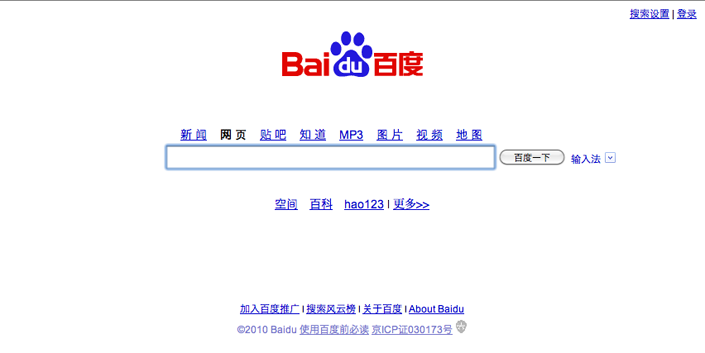Why is Chinese web design so bad?

How it all began
Shortly after arriving in China in the summer of 2005, I began to notice some difficulties in distinguishing Chinese and Western cultures. And I do not mean obvious things like language, appearance, state philosophy, and so on. Thin differences, for example, in sense of humor, interests and artistic preferences, have become the most prominent.
I noticed that I could not find a Chinese website that would seem visually appealing to me. Out of commonplace curiosity, I asked the locals to compile a list of regularly visited sites, which, in their opinion, have a good design.
I think that if I asked this question to ordinary Internet users in the West, the list would have been no less badly designed sites (khe-facebook-khe-amazon-khe). I mean. that if I asked Chinese web designers, the result could be different. However, I received the following addresses:
- Baidu (Chinese Google)
- Alibaba (Chinese eBay)
- QQ (Chinese AIM / Google Talk)
- Ren Ren (Chinese Facebook)
- Sina (Chinese Yahoo)
With the exception of baidu.com (which Google copied the design to the open) and renren.com (which did the same with Facebook), a huge number of characters (text) are used in the Chinese Internet, with incorrect use of graphics or its complete absence. I was amazed. How is this possible? How do Chinese people deal with this amount of data? Why do they put up with it?
')
Moreover, Chinese sites often contain several synchronous animations, pop-up windows, overlays, sliders ... In general, all that Western designers are trying to avoid. It was as if I found myself in 1995 again.
My reaction
Naturally, being a pompous inhabitant of the West, my first thought was: "They are a developing nation and simply have not caught up with us yet." Maybe this is the case, because design and artistic preferences evolve over time. For example, I would not today hang a Renaissance painting in my home, although in that era I would have done so.

Another possible option (and I personally tend to it) is that education has overcome the nature and preferences of Chinese in web design are formed on the basis of it, and not artistic evolution. Of course, evolution is strongly associated with cultural education, but the point is that Chinese design is not trying to catch up with Western design in the process of its development. It follows its own path, determined mainly by Eastern culture.
Why did I have this theory
Most of the time in China I spent at the university where I worked as a teacher. There I noticed that Chinese students do not even try to understand the information, they just remember it. In their opinion, for reflection, a whole life ahead.

It seems to me that this is mainly what determines how Chinese people read and use websites. In the West, we expect something like enlightenment, understanding, even entertainment (regardless of the subject matter of the site). The inhabitants of the East is not so. At first they receive information, and only then they comprehend it. That is, the essence of my theory is that when you visit the site, the Chinese are in data collection mode. In it, they do not react, do not reflect, do not interact with the site. The brain is busy only absorbing information.

Another aspect of Chinese culture is their habit of beating around the bush. Unlike Westerners, the Chinese do not like to immediately approach the essence of the conversation. For them, this method of communication is the most acceptable. And it is not surprising that this habit was adopted by the sites.

Summarizing
Now I will summarize and clarify all of the above:
- This does not mean that now I understand the beauty of Chinese web design. In my opinion, he still gives the western design of the mid-nineties, whose styles are now deservedly considered bad.
- I do not believe that Chinese web design should or can catch up with modern western.
- I do not think that the evolution of artistic preferences is the same for all cultures. China has one, and the West has another.
- We need to appreciate the differences in our cultures, but we should not (at least today) come to a common opinion regarding web design.
Creating a site that is suitable for all cultures is an extremely difficult, if not impossible task. In addition to the language barrier, artistic preferences play a critical role. There is nothing wrong with that, because we are all different, like our cultures. And although I believe in international communication and interaction, some things should not go beyond the cultural environment in which they are located. One of these things is web design.
Source: https://habr.com/ru/post/113368/
All Articles